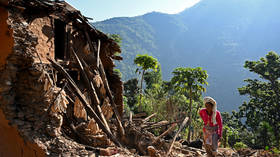‘It stinks’: The world’s tallest mountain is overflowing with feces and waste. Nepal is sounding the alarm

Everest, the world’s highest mountain, has attracted thousands of adventurers and climbers ready to test their skills against the ultimate challenge. It is also where many took their last steps. Dubbed ‘Garbage Mountain’ in 2000, it has become a lightning rod by which to gauge humanity’s impact on natural sites, and according to local legislators, things are not going well.
What was supposed to be one of the most pristine places on Earth had in fact become a giant toilet. At one point, it was so bad that the air was filled with the smell of feces as the snow melted.
This is the problem facing Mount Everest as it grapples with an ever-increasing number of climbers – many of whom don’t bother to clean up after themselves.
“[It’s] becoming a toilet due to human activity during climbing,” Mingma Chhiri Sherpa, chairperson of the Khumbu Pasang Lhamu Rural Municipality, has said.
As a result, starting this year, climbers from around the world attempting to scale the iconic mountain will be required to purchase a toilet bag at base camp and carry it to the top. When they return, the bag must be handed over with their waste.
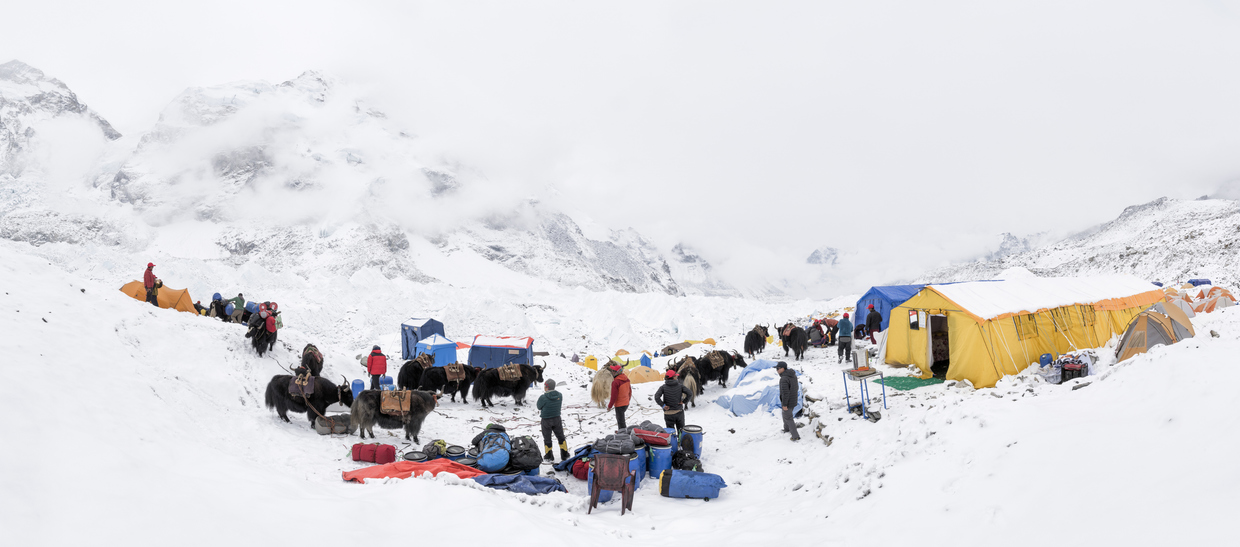
Mount Everest, the highest mountain in the world at 29,032 feet, straddles Nepal’s border with Tibet. The climbing season is in April and May, and there is a two-month season that is less popular, from September. There are two base camps, one approaching the mountain from the North Ridge, and one from the Southeast Ridge – and before the summit, there are three other camps: Camp 2 at 21,300 feet, Camp 3 at 23,950 feet, and Camp 4 at 26,000 feet.
Around 500 climbers attempt to reach the summit every year. In 2023, Nepal issued 478 permits to climb Mount Everest. Of the 209 permits given for April 2024, 44 are for climbers from the US, 22 from China, 17 from Japan, 16 from Russia, and 13 from the UK.
The new rule for climbers this year was set by the rural municipality, under whose jurisdiction Mount Everest falls, to clean the mountain. “There has been filth due to human activity such as passing urine and stool, so we have decided to distribute poo bags to climbers to preserve Mount Everest and other Himalayan areas from human waste,” Mingma Chhiri Sherpa said.
Ang Tshering Sherpa, a veteran tourism entrepreneur in Nepal and former president of the Nepal Mountaineering Association, spoke of the 2007 melting of snow at Camp 2. As a result of the terrible smell that followed, a rule was introduced requiring climbers to carry a separate bag for feces.
“However, this rule was not fully implemented,” he said. “I hope that the rural municipality’s rule will be fully enforced.”
Mountain climbers say the smell of urine and feces lingers after the snow melts. According to Ang Tshering Sherpa, as human activity increases in the Everest region, human waste also increases.
“A significant problem is human waste management in the Himalayas, where hundreds of humans continuously stay at Everest Base Camp for 45 days during the climbing season,” he said. “There are no toilets to manage their urine and feces.”
According to data from the Sagarmatha Pollution Control Committee, in the spring, around 350 climbers go to base camp and deposit 70 tons of garbage, including 15-20 tons of human waste, 20-25 tons of plastic and paper, and 15-20 tons of degradable kitchen waste.
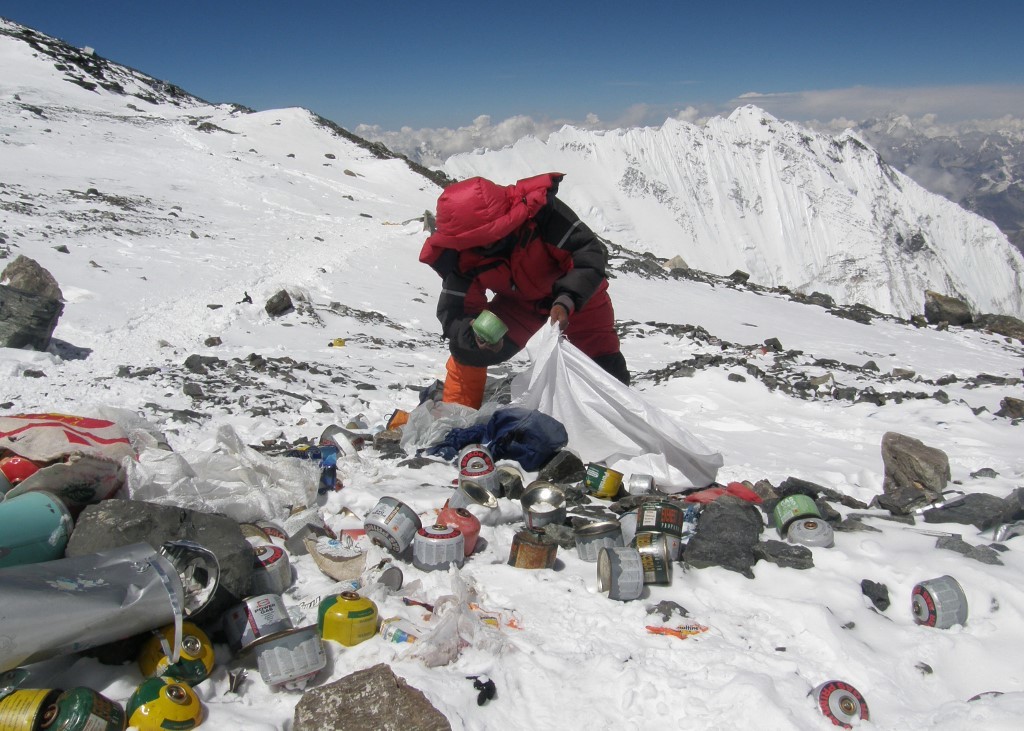
The exact amount of garbage accumulated above Mount Everest’s base camp is not known. Mingma Sherpa (not the person mentioned above), chairperson of Seven Summit Treks company, says that not all garbage is brought down from the upper side. “Those who go up find their bodies getting heavy, so they can’t bring down the garbage,” he said.
It is believed that garbage has been dumped on Everest since 1960. For the past seven years, the Nepal Army has conducted the Clean Himalaya campaign annually, collecting around 110 tons from 2019 to 2023, but Sherpa say that not all garbage has been collected.
Mingma Sherpa estimates that about 30 tons of waste lies beyond the base camp every year.
As the snow melts, old waste is uncovered; and with the increase in temperatures, it starts to resurface. From 2008 to 2023, around 38,000kg of waste, as well as seven dead bodies, were collected during cleanups conducted by the Eco-Everest campaign. According to Ang Tshering Sherpa, the garbage and dead bodies date back to before 1980. “A lot of the waste is from the 1960s to the 1980s, and as the snow melts, older waste will resurface,” he said.
The 1973 Italian Everest expedition was the largest ever, with 134 participants, of which 112 were climbers. Ang Tshering Sherpa recalls that 126 tons of goods for the climbers were transported from Kathmandu to Lukla by airplane, and then 3,500 porters carried them to the base camp. Additionally, 60 tons of goods were transported above the base camp by helicopter. During that time, a helicopter crashed in Camp 2. In 2009, 36 years after the accident, parts of the helicopter were found almost one and a half kilometers below the site of the accident.
Ang Tshering Sherpa said that this situation, which shows that the ever-freezing glacier of Mount Everest has moved downwards by less than one kilometer in 36 years, is a good example to understand the adverse effects of global temperature increases on mountains.
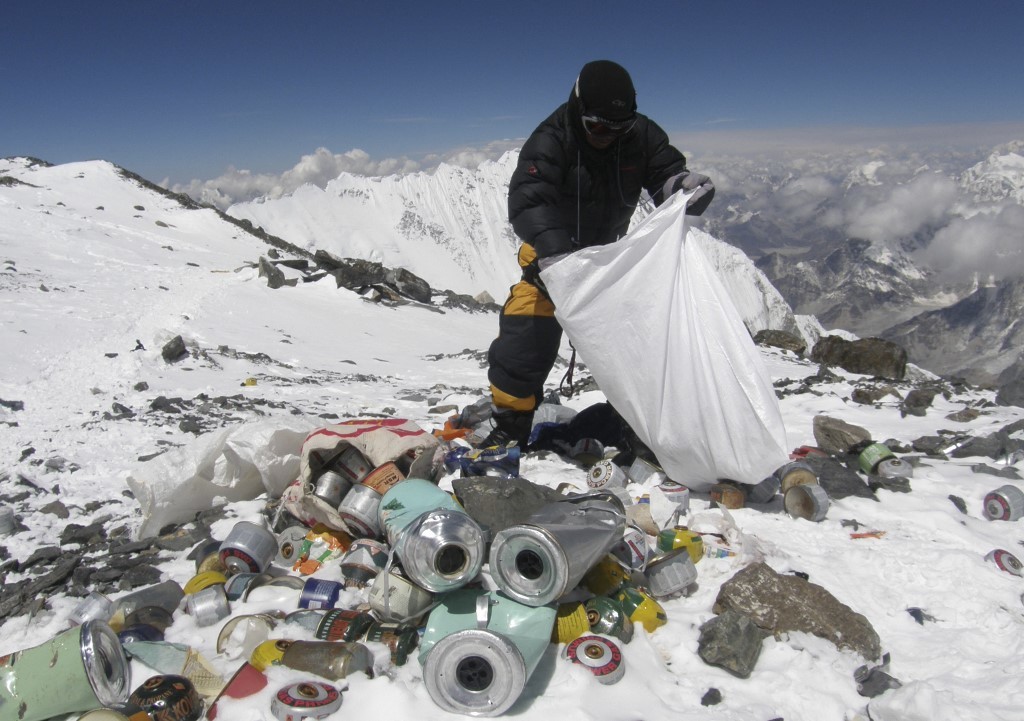
Government negligence
Mountaineering Regulations 2002 stipulate that mountain climbing teams must deposit a bond for waste management in advance, which varies from mountain to mountain. The bond for Mount Everest is $4,000.
According to the director-general of the tourism department, if the team does not bring back the waste from the climb, the bond will be confiscated.
However, Ang Tshering Sherpa says there is no reliable mechanism for monitoring the teams and how much waste they bring back. “Even though the liaison officer assigned by the department and the ministry will be given the task of monitoring the ascent, they themselves do not reach the base camp,” he said.
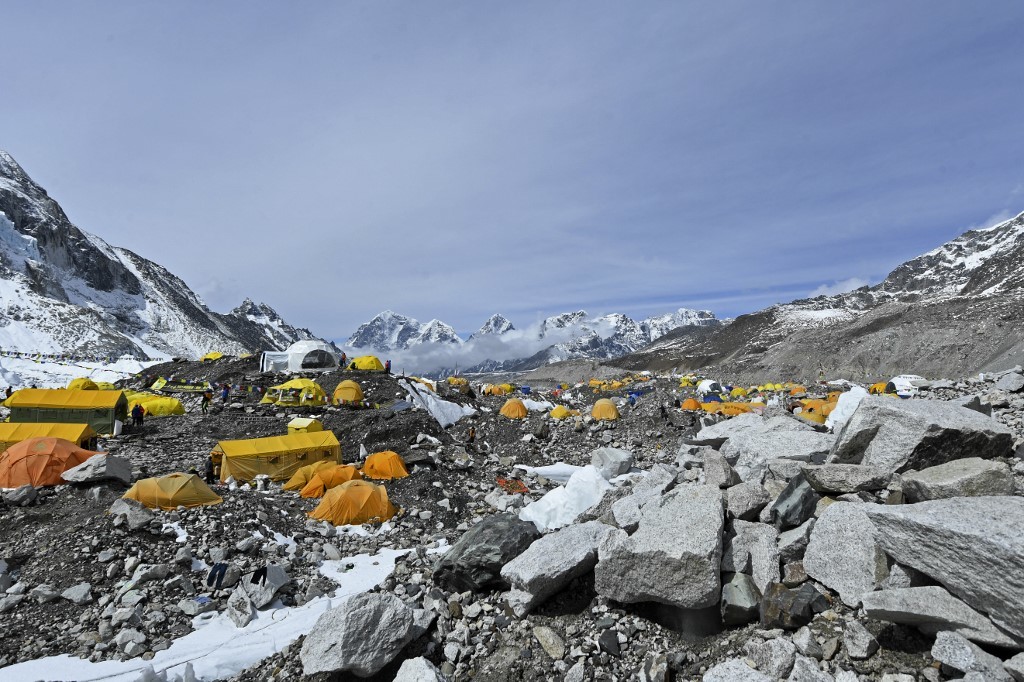
According to the owner of a trekking company who did not wish to be named, government employees assigned as liaison officers stay in Kathmandu and sign papers regarding waste return. The company is refunded the bond based on this.
“This was wrong. The liaison officer does not even reside at base camp,” he said. “They don’t even look at whether the team cleaned it or not. It should be mandatory to bring back the garbage, but the tourism department doesn’t listen to us.”
Past cleaning campaigns
In 1992, America’s Time magazine published a cartoon of ‘Mt. Garbage’, with a pile of trash larger than Everest. This started a global discussion about garbage on Mount Everest.
According to Ang Tshering Sherpa, the Everest cleaning campaign started in 1995 at the initiative of the mountaineering association after criticism from trekking companies. (Sherpa was president at the time.) The association conducted this campaign with its own funds and collected 7,500kg of garbage from above the base camp.
In 2000, under the leadership of Ken Noguchi, a Japanese environmental campaigner, Everest was cleaned. The team included 36 climbing Sherpas and two cooks. In 2001 and 2002, the team also conducted sanitation campaigns.
Since 2019, the Nepal Army has regularly collected waste from Mount Everest along with organizations such as the Nepal Mountaineering Association, Khumbu Pasang Lhamu Rural Municipality, and others.
